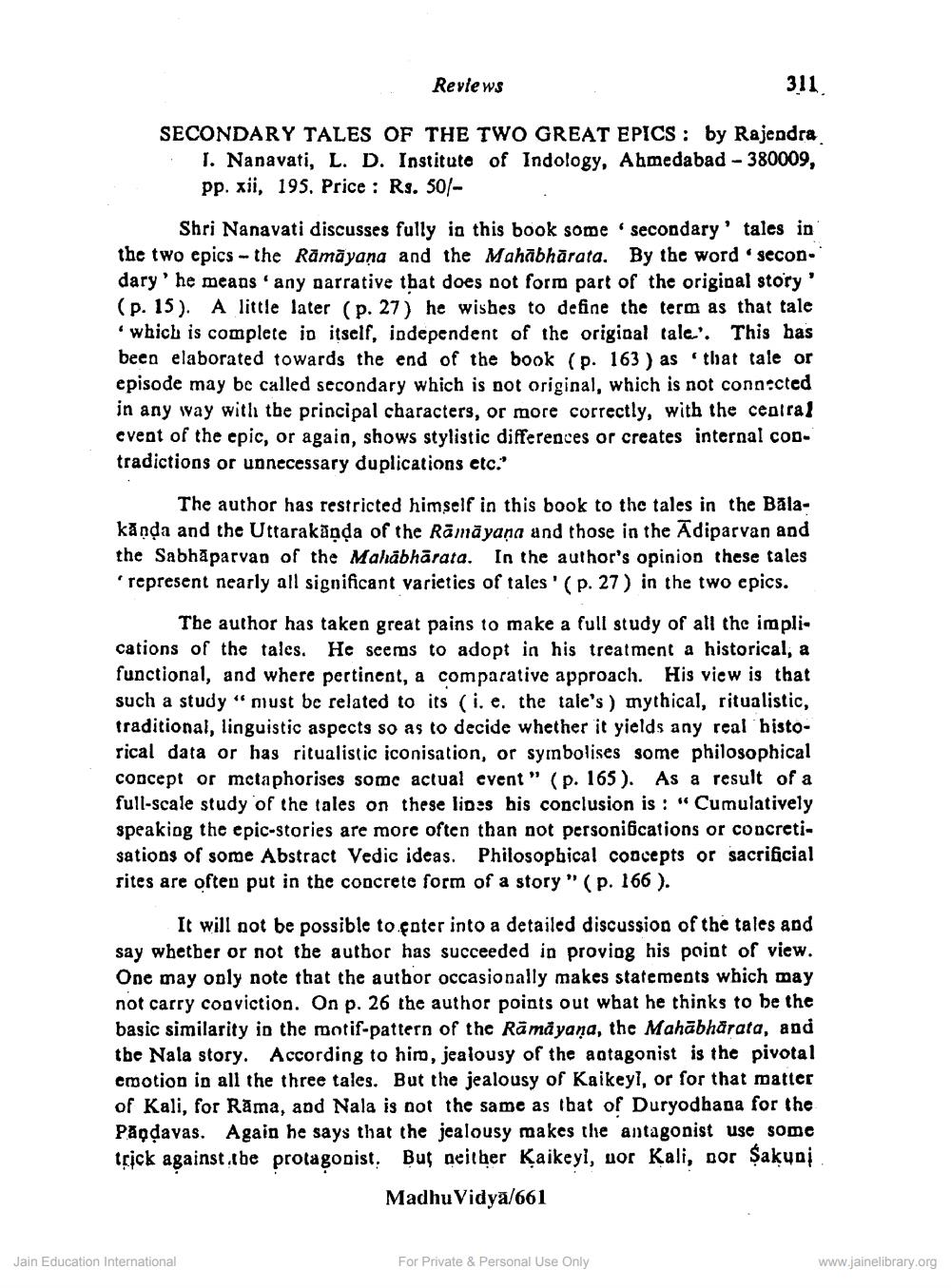________________
Reviews
311
SECONDARY TALES OF THE TWO GREAT EPICS : by Rajendra
1. Nanavati, L. D. Institute of Indology, Ahmedabad - 380009, pp. xii, 195. Price : Rs. 50/
Shri Nanavati discusses fully in this book some 'secondary' tales in the two epics - the Rāmāyana and the Mahābhārata. By the word secondary' he meaas'any parrative that does not form part of the original story' (p. 15). A little later (p. 27) he wishes to define the term as that tale
which is complete in itself, independent of the original tale'. This has been elaborated towards the end of the book (p. 163 ) as that tale or episode may be called secondary which is not original, which is not connected in any way with the principal characters, or more correctly, with the central cvent of the epic, or again, shows stylistic differences or creates internal contradictions or unnecessary duplications etc.'
The author has restricted himself in this book to the tales in the Balakanda and the Uttarakanda of the Ramāyana and those in the Adiparvan and the Sabhāparvan of the Mahabharata. In the author's opinion these tales represent nearly all significant varieties of tales' (p. 27) in the two epics.
The author has taken great pains to make a full study of all the implications of the tales. He seems to adopt in his treatment a historical, a functional, and where pertinent, a comparative approach. His view is that such a study “must be related to its (i, e, the tale's ) mythical, ritualistic, traditional, linguistic aspects so as to decide whether it yields any real bistorical data or has ritualistic iconisation, or symbolises some philosophical concept or metaphorises some actual event" (p. 165 ). As a result of a full-scale study of the tales on these lipss his conclusion is : “Cumulatively speaking the epic-stories are more often than not personications or concretisations of some Abstract Vedic ideas. Philosophical concepts or sacrificial rites are often put in the concrete form of a story" (p. 166).
It will not be possible to enter into a detailed discussion of the tales and say whether or not the author has succeeded in proving his poiat of view. One may only note that the author occasionally makes statements which may not carry conviction. On p. 26 the author points out what he thinks to be the basic similarity in the motif-pattern of the Rāmāyaṇa, the Mahābharata, and the Nala story. According to him, jealousy of the antagonist is the pivotal emotion in all the three tales. But the jealousy of Kaikeyl, or for that matter of Kali, for Rāma, and Nala is not the same as that of Duryodhana for the Pāodavas. Again he says that the jealousy makes the antagonist use some trick against the protagonist. But neither Kaikeyi, uor Kali, por Şakuni.
Madhu Vidya/661
Jain Education International
For Private & Personal Use Only
www.jainelibrary.org




